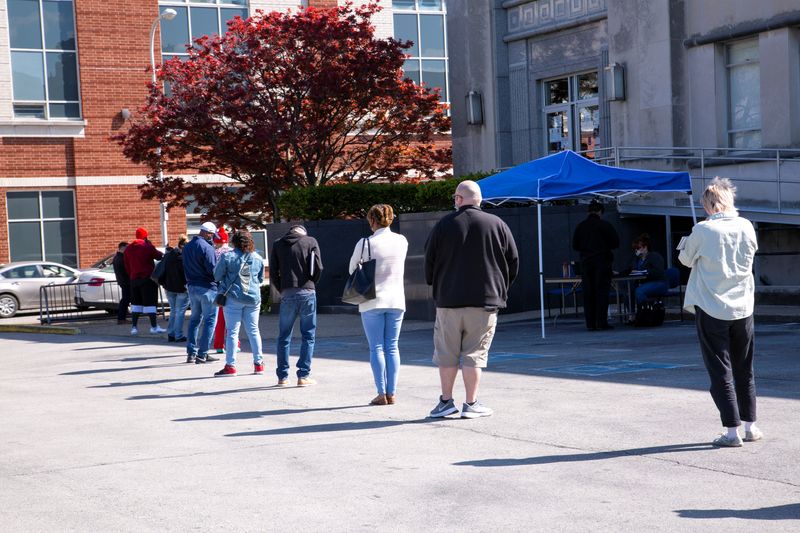By Lucia Mutikani
WASHINGTON (Reuters) -U.S. private payrolls rose more than expected in July as small businesses boosted hiring, pointing to continued labor market resilience that could shield the economy from a recession.
The ADP National Employment report on Wednesday also showed a moderation in wage growth, which bodes well for the inflation outlook. It added to recent upbeat data ranging from inflation to consumer spending in raising hopes that the economy will have the "soft landing" envisioned by Federal Reserve officials.
"This is the latest in 'soft-landing' economic statistics where Fed officials are seeing inflation slowing down without creating the massive unemployment seen in a recession," said Christopher Rupkey, chief economist at FWDBONDS in New York.
"As long as inflation remains on the low side in upcoming reports, the Fed is likely to skip the September meeting when it comes to hiking rates again."
Private payrolls increased by 324,000 jobs last month after surging by 455,000 in June, according to ADP. Economists polled by Reuters had forecast private employment would increase by 189,000.
Wages for workers remaining in their jobs increased 6.2% in the 12 months through July after advancing 6.4% in June. For those changing jobs, wages rose 10.2% on a year-on-year basis after increasing 11.3% in June. This aligns with government data on Tuesday that showed a sharp decline in workers quitting their jobs for greener pastures in June.
U.S. stocks were trading lower as investors fretted over rating agency Fitch's surprise move late on Tuesday to downgrade the U.S. government's credit rating. The dollar rose against a basket of currencies. U.S. Treasury prices fell.
MANUFACTURING DRAG
Hiring at small business, establishments with one to 49 employees increased 237,000, accounting for more than two-thirds of the gain in private payrolls last month.
Payrolls at medium-sized businesses, with 50-499 workers rose by 138,000. But large establishments, businesses with more than a headcount of 500, shed 67,000 positions.
"The hiring challenge for small firms has been part of their growth story, they were blocked out last year by bigger firms that hired in droves," Nela Richardson, the ADP's chief economist, told reporters. "It's been a combination of trying to get headcount in the door, but also working against a supply of workers that have been a little bit hesitant to come back into the labor market. So we're seeing that starting to reverse."
In terms of industry composition, the services sector continued to dominate employment gains, with payrolls rising by 303,000. Some of the industries, especially leisure and hospitality, are still catching up after difficulties finding workers during the COVID-19 pandemic. The goods-producing sector added 21,000 jobs as manufacturing lost 36,000 positions.
The labor market is only slowing gradually despite 525 basis points worth of interest rate increases from the Fed since March 2022. The government reported on Tuesday that there were 1.6 job openings for every unemployed person in June, little changed from May. A survey last month showed consumers very bullish about the labor market in July.
The ADP report, jointly developed with the Stanford Digital Economy Lab, was published ahead of the release on Friday of the U.S. Bureau of Labor Statistics' more comprehensive and closely watched employment report for July.
It has not been a reliable gauge in forecasting private payrolls in the BLS employment report.

"Last month, the June data from ADP overshot the related June data from the BLS significantly, and over time the ADP report has not been a reliable predictor of the BLS data," said Daniel Silver, an economist at JPMorgan (NYSE:JPM) in New York.
According to a Reuters survey of economists, the BLS is likely to report that private payrolls increased by 179,000 jobs in July. With further gains anticipated in government employment, total nonfarm payrolls are forecast to have risen by 200,000 jobs last month after increasing by 209,000 in June.